This month, Trump entered into formal talks with Russia—without Kyiv’s consent—to settle the war in Ukraine, largely on Putin’s terms. And on Friday, speaking with Zelensky in the Oval Office, he and his Vice President JD Vance performed as imperial overlords dressing down their upstart vassal. For Europeans, the once unthinkable prospect of an American departure from Europe has become a palpable possibility. The question on their minds: Can the European Union survive without the transatlantic military alliance that was famously created seventy-five years ago to, in the words of its founding Secretary General, “keep the Germans down, the Russians out, and the Americans in”?
The apparent collapse of Atlanticism as the ruling ideology of European elites has been swift. Germany’s Chancellor-in-waiting Friedrich Merz, a committed Atlanticist—coming from stints at Blackrock and corporate law firms to promote the EU-US Transatlantic Trade and Investment Partnership—was initially willing to appease the US after Trump’s win in November (offering to buy more American LNG and weapons). But JD Vance’s speech in Munich this month marked a turning point, with Merz denouncing it as an act of electoral interference that was “no less drastic, dramatic, and ultimately no less brazen, than the intervention that we have seen from Moscow.” Following the CDU’s persuasive win at the polls on Monday, Merz cast the US as an enemy of the European project. He urged the Union to build up its own defence capabilities, warning that it was now “five minutes to midnight for Europe.”
Europe is now fully and self-consciously security-constrained. This reality collides with two other foundational constraints. Europe’s self-imposed fiscal limits are infamous (we have argued they leave the continent poorer, weaker, and less green); and its energy constraints exploded into view following the Russian invasion of Ukraine, as gas prices soared and spread throughout the economy. These have unleashed political reverberations on the continent: the far-right waves hitting its elections are a powerful reminder of such fundamental vulnerabilities, which undermine the prospects for a green pathway out of the continent’s stagnation. Not for nothing in April of last year Emmanuel Macron declared “Europe is mortal: it can die.” The Green Deal is out, Europe has entered its metal era.
European elites are now convinced that Europe’s best bet going forward is to get over its self-imposed fiscal binds and borrow to invest on the sinews of power in the twenty-first century: defense, clean energy, and technology. Standing in the way of this is the EU’s unique structure, which delegates economic policy to Brussels and security to individual nation-states. Fulfilling the vision of autonomy put forward by this emerging elite consensus would require resolving questions of making versus buying green and military goods, and overcoming the strictures of Europe’s fiscal constitution—and, if it is to further the peace agenda of the European project, a wholly new politics at national, continental, and international levels.
Realities of the Russia-Ukraine War
It’s been three years of brutal attritional warfare in Ukraine following Russia’s full-scale invasion in 2022. Hundreds of thousands have been killed or wounded; millions of Ukrainians and nearly 800,000 Russians have been made refugees. Despite the many offensives and counter offensives over the last year, prolonging the war at terrible human cost, there has been little territorial gain by either side and fundamental realities have not budged. Russia will not withdraw militarily from the 20 percent of Ukraine’s territory it now occupies, Ukrainians will not abandon their desire to integrate economically and socially with the West, and Putin will not accept any settlement that allows Ukrainian integration into NATO and is demanding stringent quantitative and qualitative caps on Ukraine’s future military (as in their 2022 Istanbul talks).
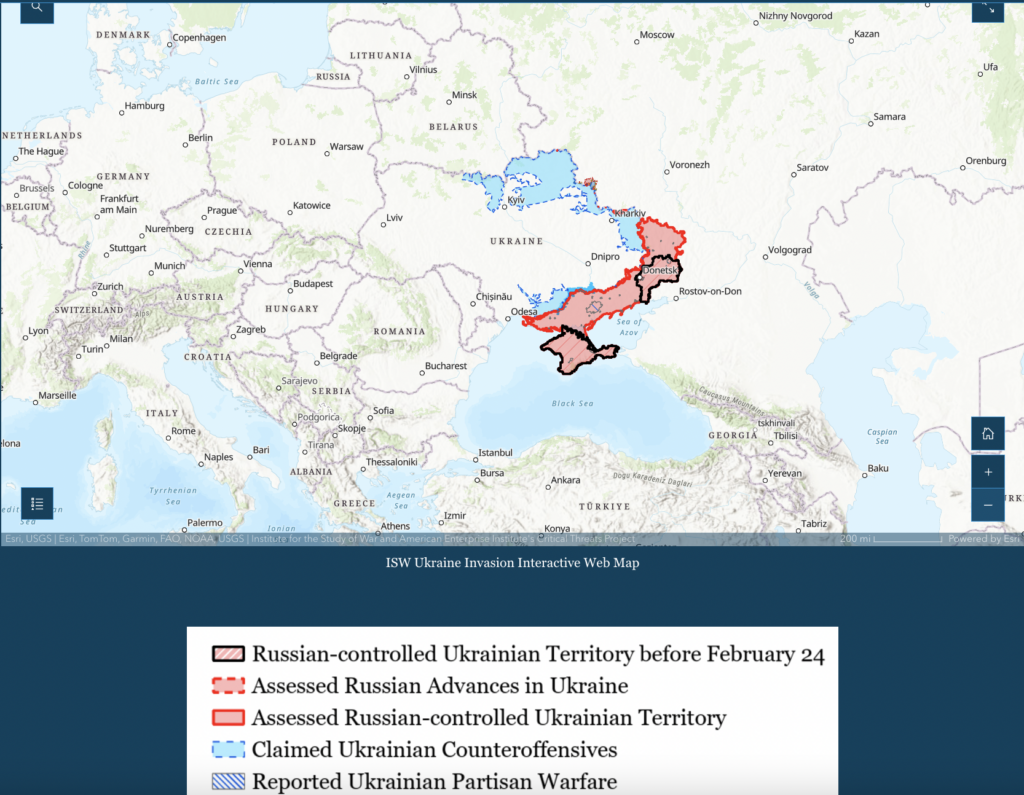
Economically, the US and Europe have not been able to weaken Russia’s war-fighting capability with sanctions. Derided by Western commentators as a “gas-station with an army,” Russia proved much stronger than the West anticipated. The desire by large developing countries and China to continue to do business with Russia—stocked with arms, hydrocarbons, food and fertilizers, as well as an expansionary fiscal policy—has meant that Russia’s economy grew faster than those of G7 countries in 2023 and in 2024, per the IMF. As sanctions expert Nicholas Mulder astutely summarized two years ago, “the limited efficacy of the sanctions is due to Russia’s policy response, its size, its commercial position and the importance of nonaligned countries in the world economy.”
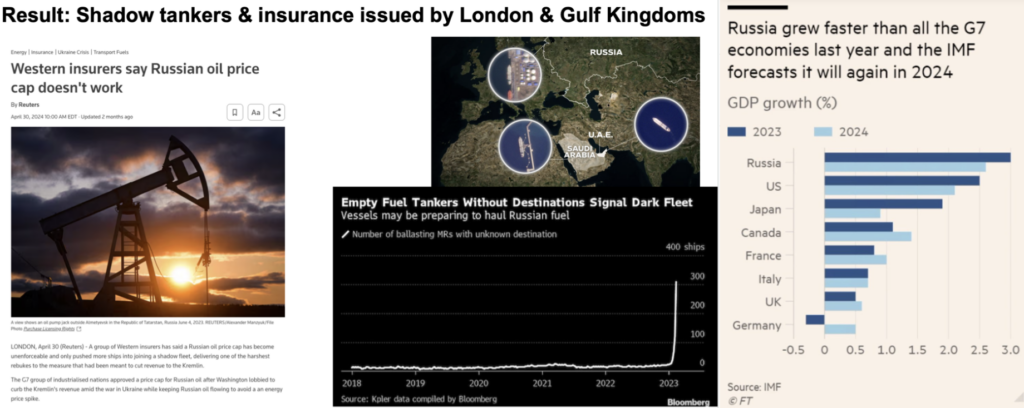
The West’s security guarantee
At the UN Security Council this week, Washington voted with Moscow and Beijing on a resolution to end the war, but made no mention of Russian aggression or Ukraine’s territorial integrity. Will there be a neutrality-in-exchange-for-occupied-Ukraine deal? That option requires an ironclad Western defense guarantee in the event of another Russian attack on Ukraine. It is here that the hard choices—for Ukrainians, Europeans and Americans—begin.
For Ukraine, with several eastern cities destroyed and its people demoralized, military victory in the form of driving Russian troops out of Ukraine is no longer possible. What will emerge instead is a negotiated settlement to ensure Ukraine holds on to the remaining 80 percent of its land—and seek the strongest Western security guarantees and economic reconstruction package. Indeed, Zelensky has agreed to the principle of the peace-for-land formula, but only if Ukraine is given NATO protection.
The Trump administration has laid down a hard line to its European NATO Allies. First, US troops will not be a part of future peacekeeping missions in Ukraine. Second, NATO’s Article 5 protections of mutual defense will not apply to any European forces sent to postwar Ukraine. Third, Ukraine should not expect to become a member of NATO. Fourth, Ukraine must trade peace-for-land and give up its claims on Russian-occupied territory.
All of this raises uncomfortable questions for domestic politics in Europe. Who exactly will do the peacekeeping in Ukraine now that the US has withdrawn military support? Who will pay to reconstruct Ukraine—and how? Will the fiscal rules constraining European spending need to be broken in order to finance defense? Or will the EU opt for higher taxes and a shrunken welfare state to foot the bill?
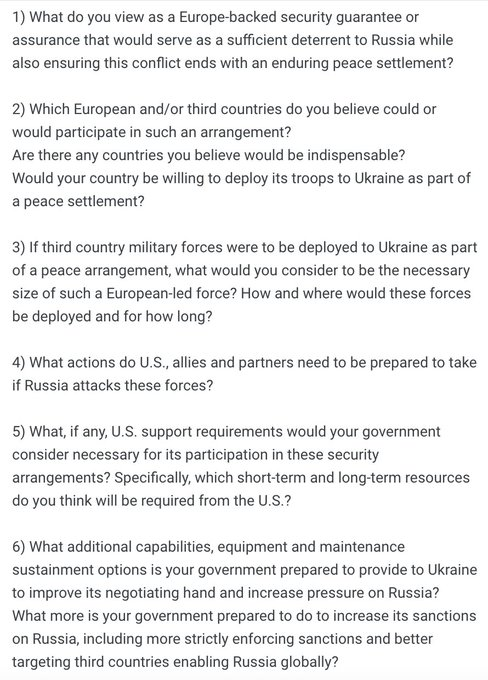
Boastful talk by the continent’s leaders at the Munich Security Conference of a large European army and “strategic autonomy” from the US have given way to sober recognition of Europe’s constraints. The gap between words and deeds has been increasingly evident over the course of the last three years, as European NATO countries have sent ammunition and money, but not troops; it has never risked escalatory measures like no-fly zones. With the end of the war now in sight, European military assistance in the form of large peacekeeping forces is also unlikely, with Macron earlier this month referring to the idea as “far-fetched,” adding that “we have to do things that are appropriate, realistic, well thought, measured, and negotiated.” Poland’s Prime Minister Donald Tusk, the leader of Europe’s largest army and Ukraine’s largest military backer behind the UK and US, said unequivocally that “Poland will not send troops to Ukraine.” Only British Prime Minister Keir Starmer has so far expressed any willingness to send in troops—a commitment that British military chiefs say cannot be met.
Sovereign Europe?
With European security now set to be left in European hands, how will its politics change? With the prospect of increased military spending, there is anxiety in some quarters of a reduction in social spending. Will the outcome be military Keynesianism for business and the state; austerity for the people? At the same time, with militaries as a large collective source of global emissions, any increase in defense spending will likely be met by pushback on climate grounds. Conservative voices, meanwhile, argue openly for the other side of the tradeoff.
It may not have to be a zero sum game. A report from the Kiel Institute for the World Economy this month has argued against the widely assumed “guns or butter” trade-off, emphasizing that “more money, labor, and raw materials channeled to military uses have not traditionally come entirely at the expense of private consumption.” The classic argument in favor of military Keynesianism is that money invested in necessary domestic industries with stable demand will create positive spillover effects: a stimulus chain of productivity growth, jobs, and increased tax revenues, which are in turn funneled towards social spending. In the period between 1950 and 1970, for example, European countries regularly invested 5 percent of GDP on defense while continuing to increase their social spending.
However, as researchers from the French Institut Delors have argued, it requires the right kind of defense investment: more production, and spending not just more but “spending better” and “spending together.” In 2020, just 11 percent of aggregate national defence budgets within the EU were allocated to joint projects, falling well short of the EU’s own 35 percent target to encourage coordinated spending. The latest official European data show that in 2023, more than 80 percent of funding went to procurement, mostly of off the shelf products from non-European companies, limiting the sorts of positive externalities identified in the Kiel report.
The emergent consensus is seeking an escape hatch from stagnation and fragmentation—and sees sovereignty and new growth potential in the military Keynesian solution to the guns or butter tradeoff.
But the conditions of possibility for a sovereign Europe lie in defense and energy. And on these grounds, European sovereignty has been heavily constrained in the hydrocarbon age. Lacking enough oil and gas to power itself, for seventy-five years the continent has been squeezed by the three centers of hydrocarbon power: the US, Russia, and the Gulf Kingdoms. By interrupting the flow of energy—the US oil embargo in 1956, the Arab oil embargo in 1973, and the Russian gas embargo in 2022—these powers have inflicted pain on European citizens and treasuries, forcing change in European foreign policy and security arrangements. Europe has been trapped in various relationships of dependency and vulnerability across these three energy powers.
Today, this means that in order to be free from authoritarian blackmail—whether Putin’s or Trump’s—Europe must go green. Despite all the rhetoric of the European Green Deal as transformative in addressing energy, growth, social welfare and nature, it has translated into neither substantial industrial policy nor foreign policy. Even in 2024, the EU was spending more money on Russian oil and gas (€22 billion) than on financial aid to Ukraine (€19 billion). Appeasing Trump by buying more seaborne LNG and locking-in more fossil-fuel infrastructure will only make the problem worse. Investment in green energy is the only path toward independence or strategic autonomy.
A new growth politics
The latent logic of this emergent elite consensus is to make—where initiatives like the Green Deal failed—a bid for a new European growth model, this time based on rearmament. If the combined goals of defense and green industry are in fact pursued in earnest by European governments, a number of tensions and structural dilemmas will have to be confronted.
The energy transition and defense both require industrial policy. In each, to be effective means choosing what exactly to make, and what exactly to buy. European countries are buying Lockheed Martin F-35A Lightning II fighters, AH-64 Apache helicopters, Patriot air defense systems, and Abrams tanks; but they are also buying a variety of more local defense kit for the continent’s rearmament. Poland, the only European NATO country already spending 5 percent of GDP on defence, has put in purchase orders for Eurofighter Typhoons, manufactured by a consortium of Airbus, BAE Systems and Leonardo, and bought ammunition and aircraft from Sweden’s Saab.
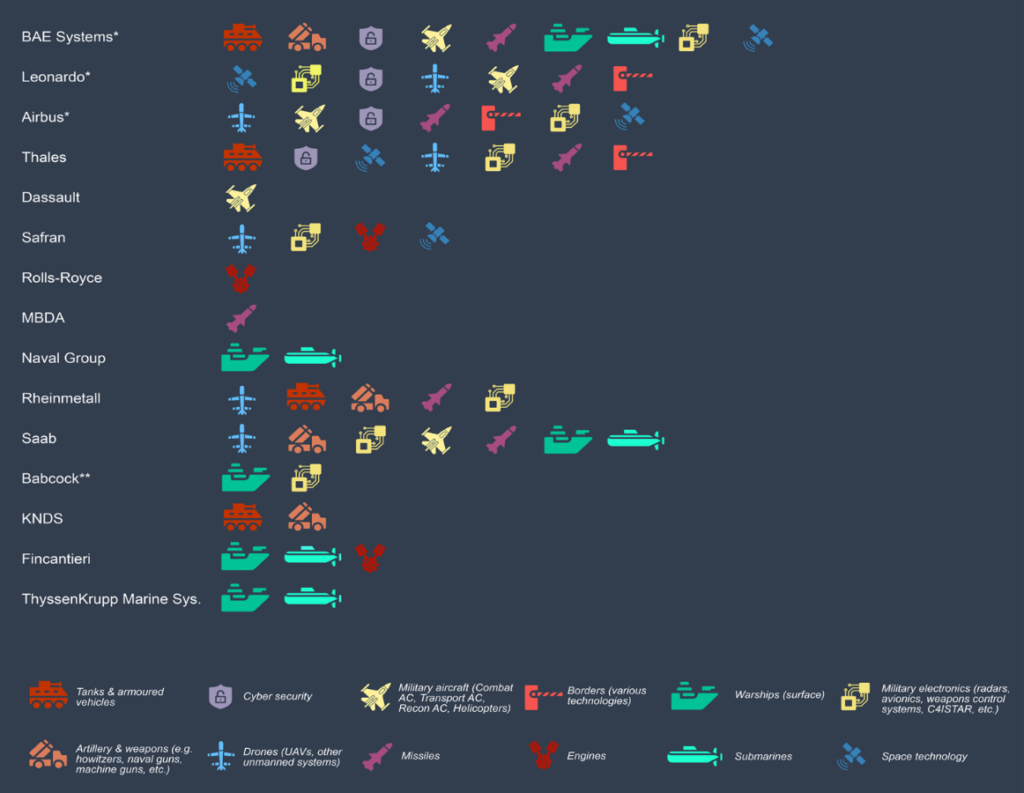
The European Commission estimates that individual countries will need to spend an additional €500 billion on defense over the next decade. However the EU’s common defense spending is half that, reaching $270 billion euros in 2023. Just 20 percent has been collaborative from EU-based suppliers. Experts find that there has never been a “genuine pan-European defense procurement market, but rather … [27 markets] fenced off with regulatory barriers to entry aimed at protecting national defence industries.” The barriers to these are political: member countries don’t want to their national champions to be dictated from Brussels.
How to pay for it? The EU has pulled a rabbit out of a hat and is set to activate the fiscal “escape clause” allowing member states to exceed the common debt and deficit limits for national defense spending. Changes are also likely for the European Investment Bank’s mandate, which it hopes will also tempt private capital to pile more into continental defense.
Sharply raising investments in local defense industry will prompt a “make versus buy” debate. Traditionally, market liberals and Transatlanticists associated with Germany, the Baltics, the UK, and Poland have positioned themselves on the “buy” side of the argument, opting to import defense kit from the US. More than three-quarters of the defense purchases by EU member states since the Russian invasion of Ukraine were from outside the EU, with almost two-thirds of it from the US.
Opposed to the Transatlanticists are the sovereigntists, or the strategic autonomists, associated with France, who want to build out a larger European military industrial complex. France has a large armaments sector; it is the third-largest exporter after the US and Russia. It is more dirigiste than Germany and fellow liberals—its 2023 military-budget law allows for requisitioning of its domestic industry—but is experiencing increased rivalry from Turkey, Israel, and Korea.
A parallel dilemma exists in clean-energy technology, where certain industries such as solar PV manufacturing have been all but lost in Europe. For these industries, as Mario Draghi’s report last year into European competitiveness outlines, there is a case for increasing manufacturing in Europe, especially where there are strategic, security, or technological benefits to doing so.
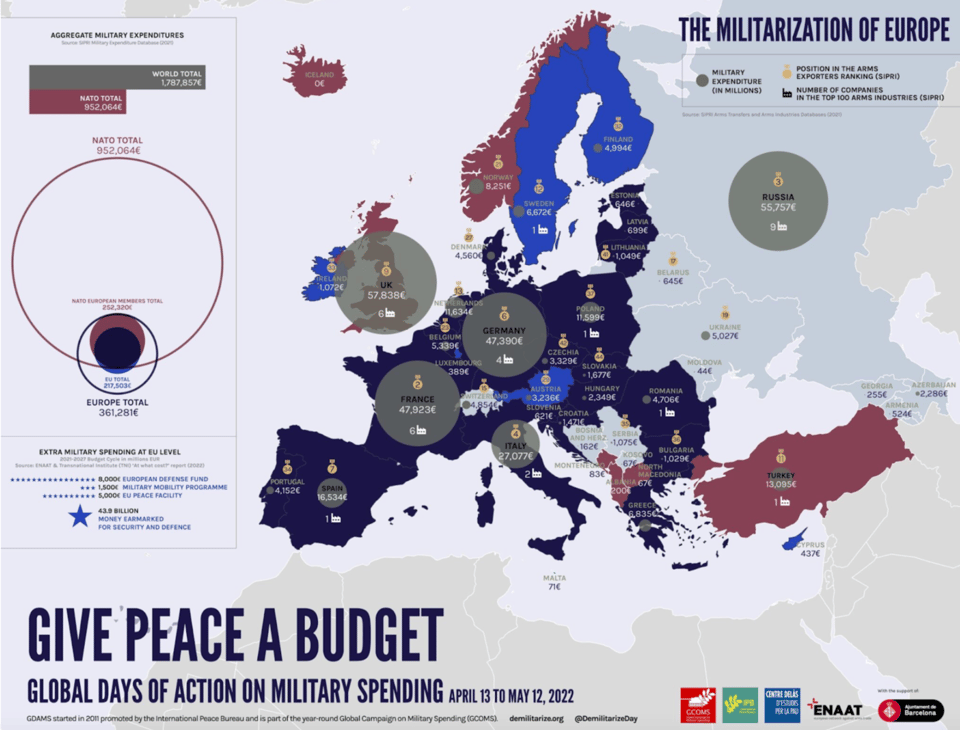
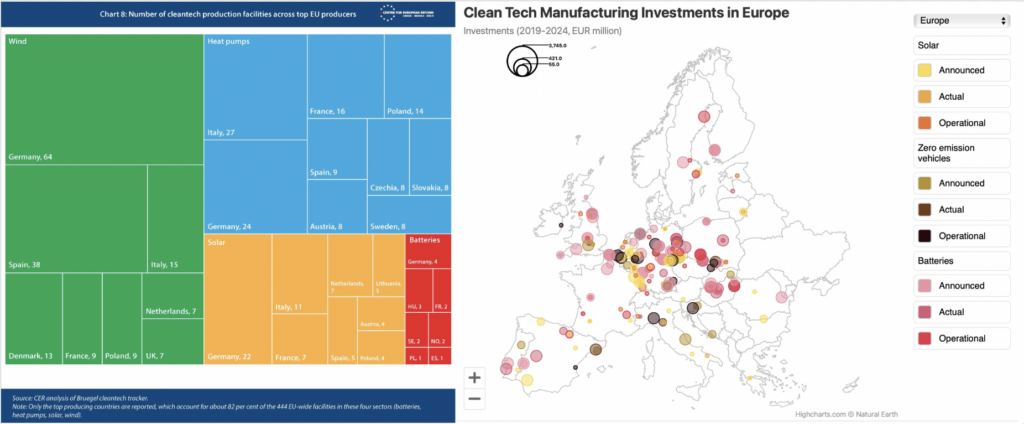
With hundreds of billions of euros in defence and green-industrial investment now on the horizon, can a new politics of growth emerge in Europe? More state-led investment in defence and green sectors is likely to lead to faster economic growth. Whether or not it leads to broader social transfers will depend on the political negotiations that unfold in individual countries—but they are at least partly constrained by fiscal opportunities and questions of coordination at the EU level.
Aligning climate action with military armament risks fomenting nativism in an era of increasing climate-driven migration and far-right ascendency. Yet “energy security” is an intrinsic component of Europe’s new “security-security” goals. If “security” is going to dominate the next phase of the European project, how will climate and social agendas be fought for?
The energy transition and transatlantic fracture can be a basis for new alliances based on something other than fossil fuels, as Pierre Charbonnier has argued. For countries such as Brazil, India, and African countries rich in tropical rainforests and minerals, “What do we offer these countries so they side with us? Europe should build its foreign policy on a coordinated response to the climate question.”
Europe’s fiscal straitjacket and lack of productive investment harmed its security, its climate goals, and its capacity for international collaboration. Brussels is now attempting a concerted albeit disjointed effort to make the continent a sovereign pole and managing the dilemmas posed by green and defence industrial policy. It has so far shown little appetite for wide-ranging reforms of the Bretton Woods Institutions that cripple climate and development spending in the global south.
The virtual destruction of most US soft power initiatives doesn’t mechanically increase the desirability or solidity of European programs like its minerals MOUs with Namibia, DRC, Rwanda and Zambia; just as a sophisticated agenda of defense and clean energy industrial policy and funding won’t automatically address the disaffection of Europeans voting for far-right parties. Money doesn’t buy sovereignty; nation-building, as the heroism shown by ordinary Ukrainians should remind Europeans, is about the ultimate political question of what is worth fighting and dying for.
Filed Under
